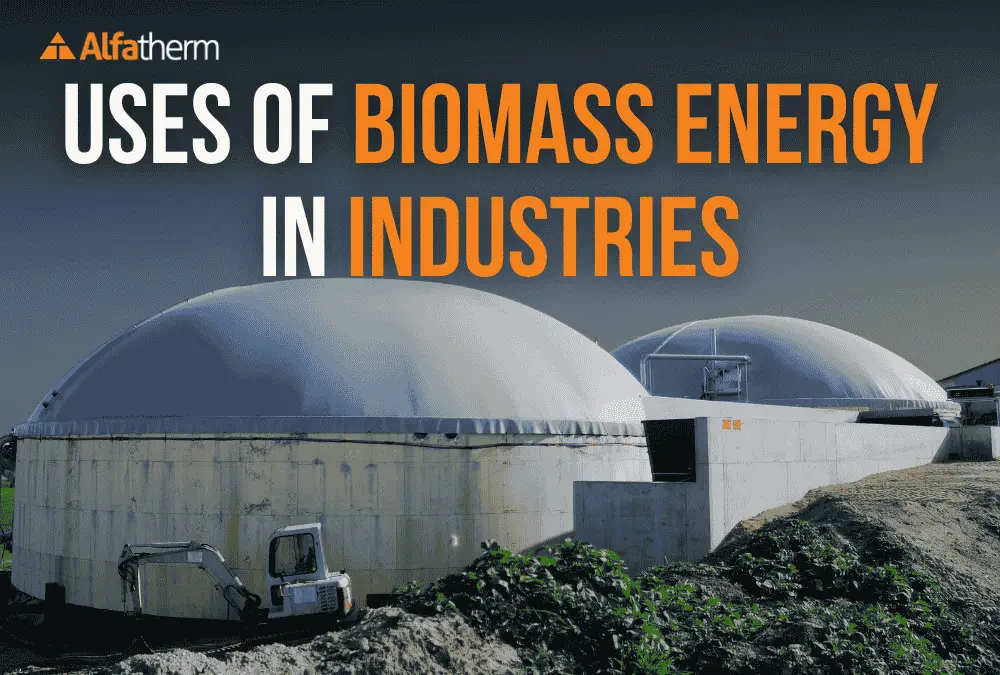
As industries worldwide accelerate their shift toward sustainable energy, biomass energy has emerged as a practical and renewable alternative to fossil fuels. From manufacturing and food processing to cement and steel production, biomass energy offers a cleaner, circular solution that aligns with global decarbonization goals.
In this article, we’ll explore the top industrial uses of biomass energy, including a special look at torrefaction technology—a game-changing innovation making biomass more efficient, energy-dense, and industrially scalable.
What Is Biomass Energy?
Biomass energy comes from organic materials—such as wood residues, agricultural waste, and dedicated energy crops—that can be converted into heat, electricity, or biofuels.
According to the International Energy Agency (IEA), bioenergy accounts for roughly 6% of total industrial energy use globally, and its share is expected to rise as industries pursue net-zero strategies.
Biomass plays a vital role in:
- Replacing coal or natural gas in boilers and kilns
- Powering combined heat and power (CHP) systems
- Producing renewable gases and fuels for industrial applications
Why Industries Are Turning to Biomass
- Renewable & Carbon-Neutral: Biomass absorbs CO₂ during growth, offsetting emissions during combustion.
- Waste Utilization: Many industries reuse their residues (wood chips, husks, bagasse) as fuel.
- Cost & Energy Security: Reduces dependence on imported fossil fuels.
- High Efficiency (with CHP): Biomass CHP plants can reach efficiencies of up to 80%.
- Local Economic Support: Promotes rural employment and local energy ecosystems.
Top Industrial Uses of Biomass Energy
1. Process Heat and Steam Generation
Industries like textiles, chemicals, and food processing require consistent thermal energy. Biomass-fired boilers efficiently supply process steam and heat, replacing fossil fuels.
Example: A paper mill uses wood bark and sawdust to fuel steam boilers, cutting energy costs while reducing emissions.
2. Combined Heat and Power (CHP)
Biomass CHP systems simultaneously generate electricity and useful heat. The process involves burning biomass to create steam, which drives a turbine and then supplies residual heat to industrial operations.
Industries benefit from higher efficiency, lower energy bills, and a reliable onsite energy supply.
3. Biomass Gasification and Biofuels
Advanced industries use gasification to convert solid biomass into syngas (a mix of hydrogen, CO, and methane), which can fuel turbines, engines, or chemical synthesis.
This method is gaining ground in cement, steel, and fertilizer sectors that require clean-burning fuels and reducing agents.
4. Waste Biomass & By-product Utilisation
Agricultural residues (like rice husks, coconut shells, or sugarcane bagasse) and wood-industry wastes are excellent sources of biomass energy.
These by-products are repurposed for heat, power, and CHP systems, transforming waste into a renewable energy source—lowering waste disposal costs and carbon footprints.
5. Biomass Power Generation (Industrial Self-Supply)
Many industries install biomass-based captive power plants to meet internal electricity demand and reduce grid dependency.
For example, sugar mills use bagasse to generate electricity for their operations and often sell surplus power to the grid.
6. Advanced Biomass Pretreatment: Torrefaction Technology
As biomass adoption expands, industries are seeking more efficient and transportable forms of biomass fuel. This is where torrefaction technology revolutionizes the game.
What Is Torrefaction?
Torrefaction is a thermal pretreatment process that heats biomass to 200–320°C in a low-oxygen environment. This controlled heating removes moisture and volatile compounds, producing torrefied biomass — often called “biocoal.”
Key Benefits of Torrefied Biomass:
- High Energy Density: Energy content increases by up to 30–40%.
- Hydrophobic Nature: Can be stored outdoors without degradation.
- Improved Grindability: Easily pulverized and co-fired with coal.
- Reduced Transport Costs: Higher energy per unit weight.
- Lower Emissions: Cleaner combustion and reduced tar formation.
These features make torrefied biomass a drop-in replacement for coal in cement, steel, and thermal power industries—requiring minimal equipment changes.
Our 300 TPD Torrefaction Technology: Pioneering Industrial Biomass Transformation
At Alfa Therm Limited, we’re proud to be at the forefront of sustainable biomass innovation with our 300 TPD (Tons Per Day) Torrefaction Technology System—designed for large-scale industrial decarbonization.
About Our 300 TPD Torrefaction System:
Our proprietary torrefaction system converts a wide range of biomass feedstocks—including wood chips, crop residues, sawdust, and agro-waste—into high-grade torrefied biomass pellets suitable for industrial combustion and co-firing applications.
Key Features:
- High Throughput: Processes up to 300 tons of biomass per day.
- Modular & Scalable: Can be integrated with existing biomass power or pellet plants.
- Automated Process Control: Ensures consistent quality and optimal torrefaction temperature.
- Energy Recovery: Captures and reuses volatile gases for self-sustaining operation.
- Reduced Carbon Intensity: Cuts lifecycle CO₂ emissions by up to 80% compared to coal.
Applications:
- Cement kilns & steel furnaces
- Biomass and thermal power plants
- District heating & industrial boilers
- Gasification and biofuel production systems
Our 300 TPD torrefaction solution demonstrates how advanced biomass technology can achieve industrial-scale carbon reduction while maintaining cost efficiency and operational reliability.
What Are Examples of Biomass Energy Use?
- Sugar mills use bagasse for power and steam generation.
- Pulp & paper plants burn wood residues for process heat.
- Cement industries co-fire torrefied biomass pellets with coal.
- Agro-processing units using rice husks and straw for drying and heating.
- Steel plants are adopting torrefied biomass as a renewable carbon source.
Benefits vs. Challenges
Benefits:
- Reduced fossil fuel dependency
- Utilization of waste & residues
- Lower CO₂ footprint
- Renewable, circular energy source
- Job creation in rural sectors
Challenges:
- Feedstock consistency and logistics
- Capital investment for conversion systems
- Ash handling and emission control
- Need for supply chain standardization
Biomass energy is driving the next wave of industrial sustainability, offering a renewable pathway to decarbonize high-energy sectors. With the integration of advanced technologies like torrefaction, the future of industrial energy is not only renewable but also more efficient, stable, and scalable.
At Alfa Therm Limited, our 300 TPD Torrefaction Technology stands as a testament to innovation in renewable energy — helping industries worldwide achieve their net-zero goals while ensuring operational excellence.
Frequently Asked Questions (FAQs)
Torrefaction is a thermal pretreatment process that heats biomass to around 200–320°C in a low-oxygen environment. This mild pyrolysis removes moisture and volatile compounds, creating torrefied biomass — a dry, energy-dense, and stable solid fuel often referred to as biocoal.
It enhances the energy content, storability, and combustion behavior of biomass, making it suitable for large-scale industrial applications.
Torrefied biomass improves industrial efficiency in several ways:
- It has higher energy density (30–40% more than raw biomass), allowing more energy per kilogram.
- Its hydrophobic nature prevents moisture absorption, ensuring consistent fuel quality.
- It burns cleaner and more completely, leading to higher boiler efficiency and reduced emissions.
- Its improved grindability allows easy co-firing with coal in existing boilers and kilns without extensive retrofitting.
Overall, industries achieve better combustion performance, lower maintenance, and greater energy yield per ton of fuel.
Yes, torrefied biomass can partially or fully replace coal in cement kilns, steel furnaces, and thermal power plants.
Because it mimics coal’s physical and energy properties, it can be used as a drop-in fuel, reducing CO₂ emissions by up to 80% while maintaining process stability.
Industries benefit from reduced carbon footprint, lower carbon tax exposure, and easier compliance with sustainability regulations.
Industries that require process heat, steam, or high-temperature operations benefit the most, such as:
- Cement and steel plants (for co-firing and process heat)
- Paper and pulp industries (using wood residues)
- Food and agro-processing units (for drying, heating, and CHP)
- Chemical and textile sectors (for steam and thermal energy)
- Power generation facilities (for captive biomass or torrefied biomass use)
These sectors can significantly reduce fossil fuel use and energy costs while improving environmental performance.
Industrial torrefaction systems range from 50 TPD (tons per day) for small-scale setups to 300 TPD or more for large industrial facilities.
At Alfa Therm Limited, our 300 TPD torrefaction technology is designed for high-throughput, energy-efficient biomass conversion—capable of processing multiple feedstocks like wood chips, crop residues, and sawdust with consistent quality output.
During torrefaction, biomass is gently heated in a low-oxygen chamber. This process:
- Removes bound and free moisture, reducing water content from 30–50% down to <5%.
- Breaks down hemicellulose, releasing volatiles and enhancing carbon content.
- Increases energy density and makes the material hydrophobic, preventing reabsorption of moisture.
- Improves grindability and storage stability, ensuring reliable performance in industrial systems.
As a result, the fuel becomes more efficient, cleaner-burning, and easier to transport and store.


